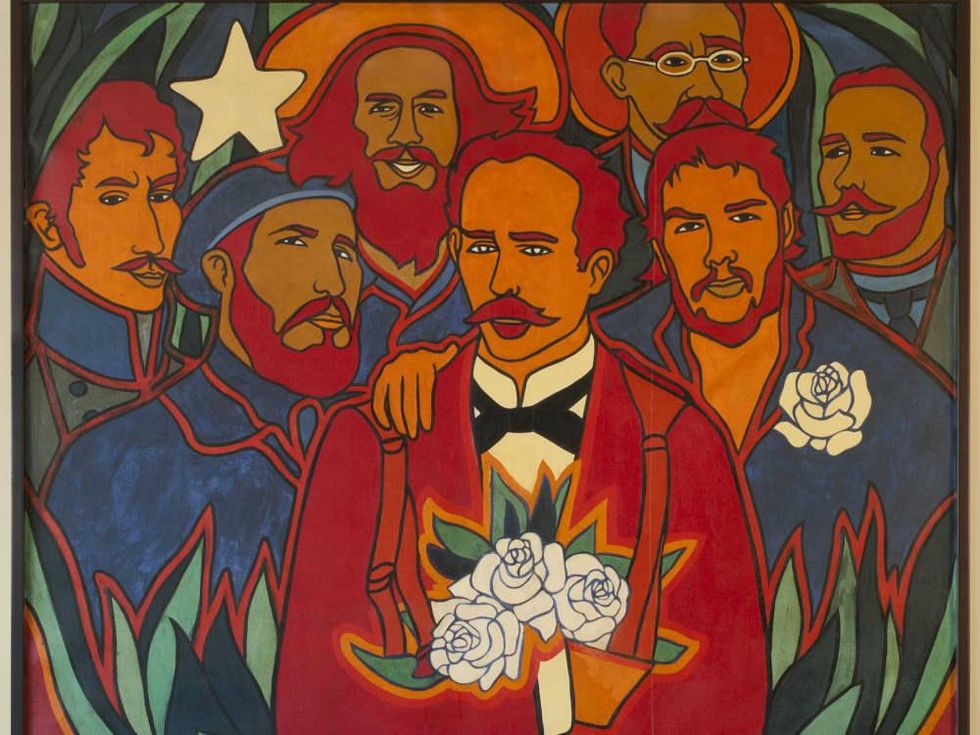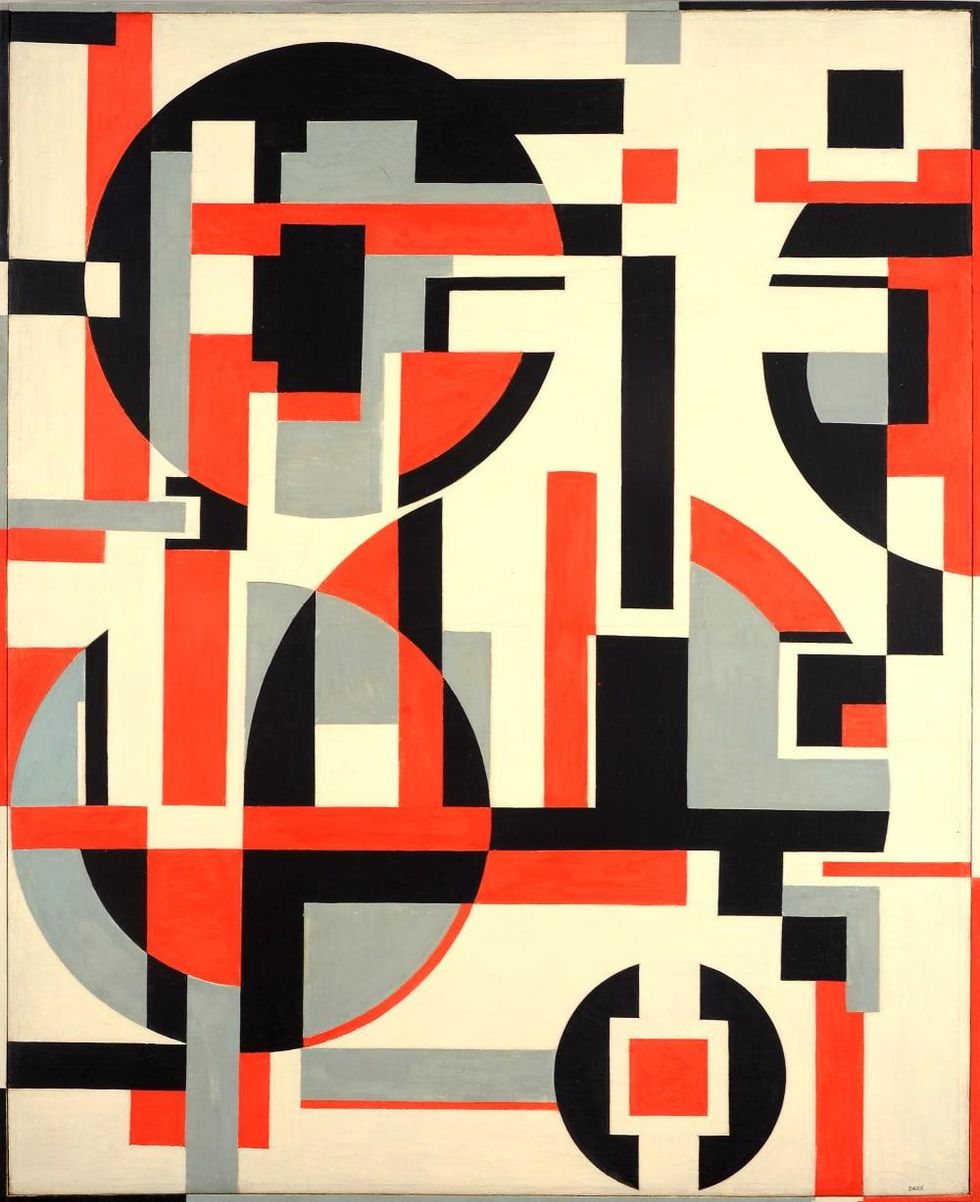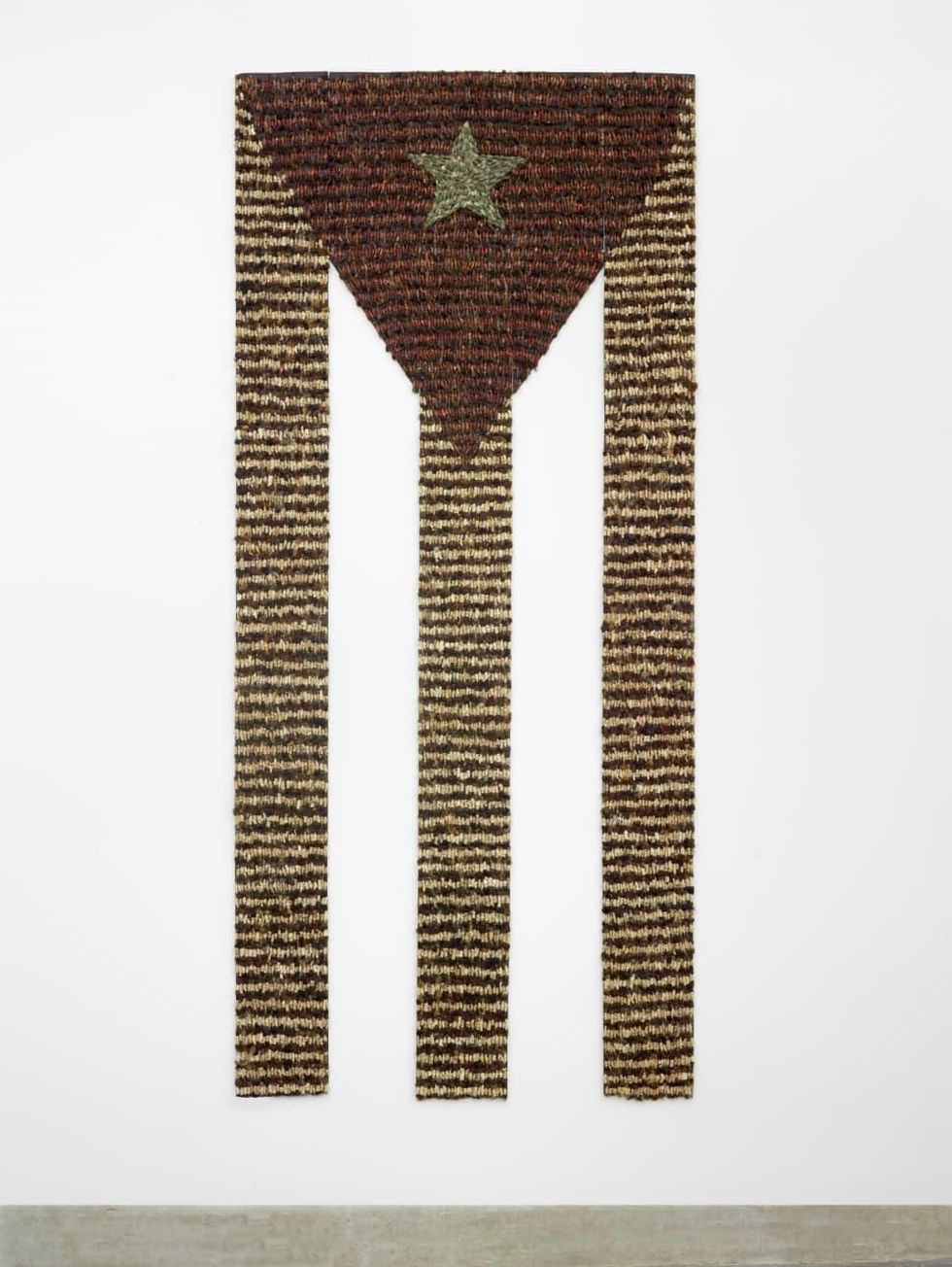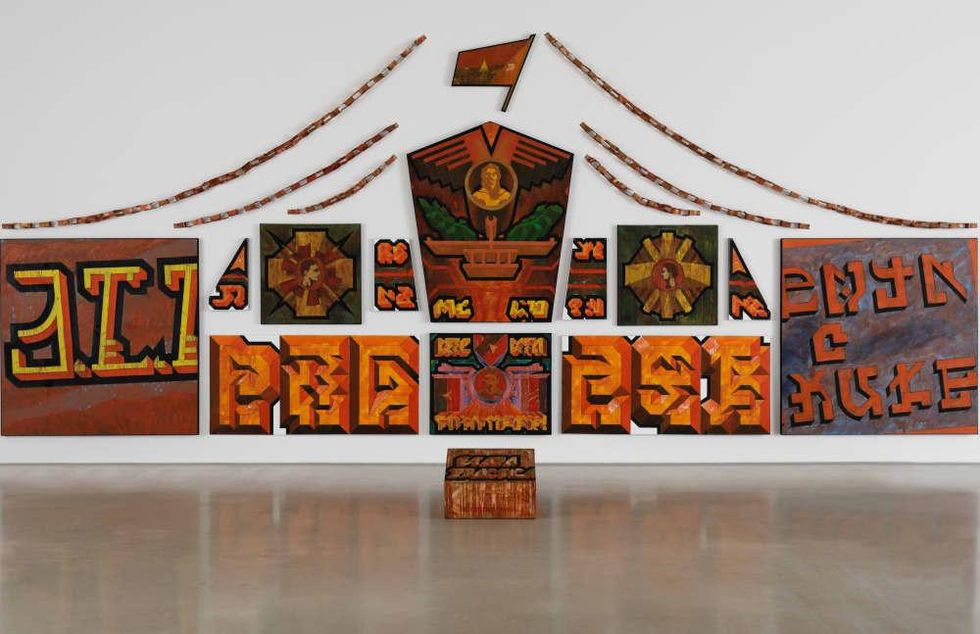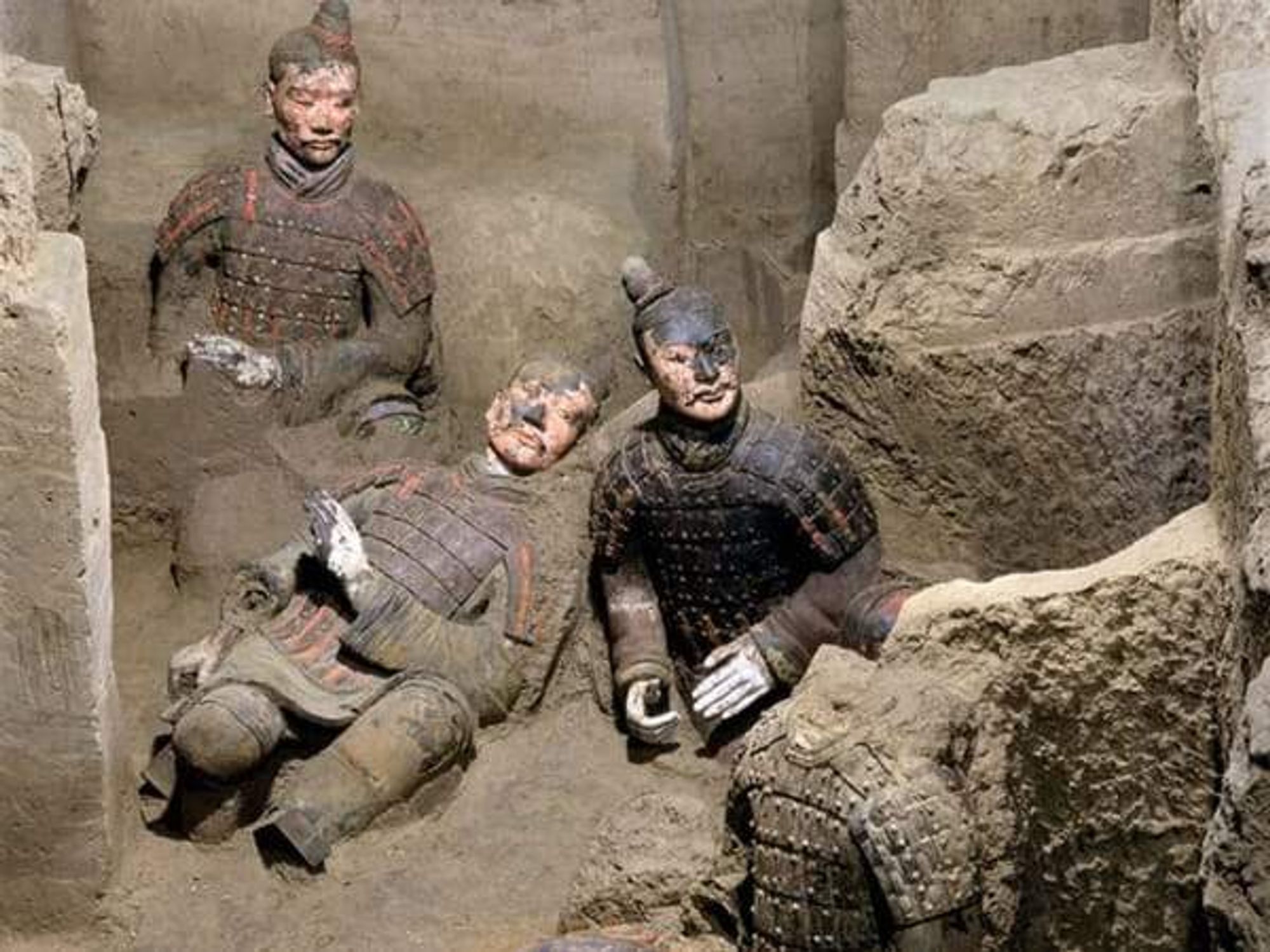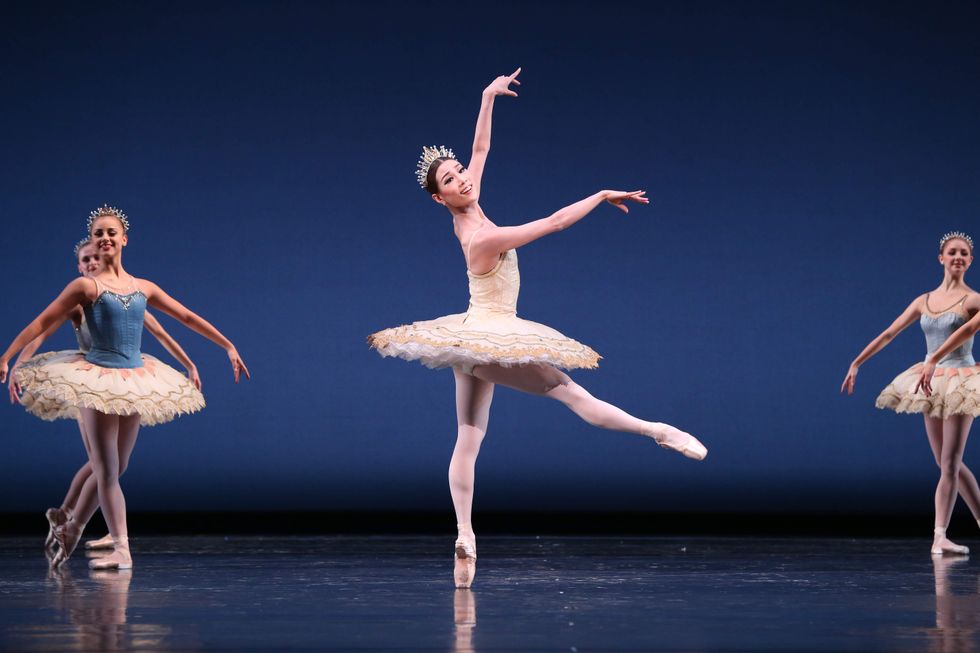Adios Utopia
Art and history collide in monumental exhibition of Cuban art at MFAH
Adiós Utopia: Dreams and Deceptions in Cuban Art Since 1950, the new exhibition at the Museum of Fine Arts, Houston defies simple labels. The more than 100 works from over half a century of Cuban art — the paintings, sculptures, photography, graphic designs and videos — that fill the Caroline Wiess Law Building upstairs gallery do not fit easily into set artistic categories. Yet, if any one word does come close to describing the exhibition, it might be: historic.
That’s the apt term MFAH director Gary Tinterow used to first introduce the exhibition during a recent media preview of the artworks.
“It's the first, the largest, the most important exhibition on Cuba to be held in our country since the momentous change in the Cuban Revolution in 1959. In fact, it’s probably the largest exhibition of Cuban art to be held in our country since the Museum of Modern Art’s great exhibition in the '40s,” explained Tinterow.
The exhibition also lays claim to the historic moniker by the way the contemporary history of the Cuban people becomes both subject matter and fuel for some of the pieces. Adiós Utopia reveals how 20th century Cuban history influenced the country’s art and how art influenced and reflected the Cuban Revolution.
Art to History
“We noticed that many of the large exhibitions of Cuban art were focused more on Cuba and on the unique Cuban history than on the art,” explained Gerardo Mosquera, one of the three organizing curators of Adiós Utopia. “The exhibitions were organized mainly from Cuba’s history to the art, and we decided to go the other way around, to go from the art to history. We focused on excellence, to gather very powerful important pieces of art and have them tell the story from the art.”
Of course, that story many of the artists told was also one of the defining events in the Western Hemisphere in the last century, the Cuban Revolution.
“It was a revolution that placed a small country in the Caribbean at the vanguard of an experiment in social justice as well as innovative programs in education, health and the arts,” said Mari Carmen Ramírez, the Wortham Curator of Latin American Art at the MFAH and museum advisor to the Adiós Utopia project.
“Like many of these struggles it was full of hope: the promise of a utopia for the Cuban people, the promise of decolonizing the history of Cuba and making a better future. Like many of these struggles, it was also fraught with contradictions, paradoxes and ultimately failures, but in the process it produced great art,” said Ramírez.
She also noted how much artists “participated in the revolutionary process of creating a new society” and a participation represented throughout the exhibition, especially in the first several galleries.
In their attempt to “to go from the art to history,” the three main Cuban curators Gerardo Mosquera, René Francisco Rodríguez and Elsa Vega decided against organizing the exhibition chronologically, but instead collected the works into multi-gallery thematic clusters.
While the exhibition calls for return visits to fully experience and appreciate the breadth of the collected works, here’s a quick guide of what to expect in the thematic sections.
Poster Art and Abstraction: Universalism and Artistic Language
To better understand how artists even helped to create and construct the visual imagery of the revolution, take some time to view a stunning collection of poster art installed on the opening wall of the exhibition. Then enter the first gallery to see examples of Geometric Abstract paintings as Cuban artists in the 1950 left behind representational art in pursuit of abstraction. Even in this section, the curators refused to chronologically hem in the works and include works from later in the 20th and even 21st century, like Yaima Carranza’s nail polish tutorial videos.
Cult and Destruction of the Revolutionary Nation
The next section examines how art created the imagery of the revolution, from documenting photographs by Alberto Korda and Raúl Corrales to the paintings and sculptures that helped to transform political leaders and philosophical and poetic influences into icons of the struggle. But as artists helped to build the imagery of a new Cuba, others began to deconstruct it.
“As the revolution began to turn away from its promise of this utopia, the artists were also the first to speak truth to power and to expose the contradictions of the government and revolutionary struggle,” Ramírez noted, and this artistic speaking of the truth can be seen within this “Revolutionary Nation” section but even more strongly in the next.
The Imposition of Words: Discourse, Rhetoric, and Media Controls
“Humor has been a tool and a weapon for Cuban artists to think about society, about culture, in a deconstructive way,” described Mosquera, and much of the humor and irony present in many of the works throughout the exhibition can be found in abundance in this middle section filled with images of nonsense words, mouths, a tongue being literally tied (Jeanette Chavez’s Autocensura Self-censorship) and forced silences.
Sea, Borders, Exile
The next galleries perhaps reinforce the idea that we’re all just caught in history repeating as Cuban artists contemplate borders as a real watery presence and as an idea. Over the decades they looked to the sea as the ultimate border that both offers another life or death as Cubans tried to cross that border for exile.
Inverted Utopias
The exhibition ends with goodbyes to that hoped-for ideal society and with a continuing critique of what the revolution brought. While Faro tumblado (Felled lighthouse) the fallen, rather phallic, sculpture of the Morro Castle lighthouse in Havana, by the the artist collective Los Carpinteros, serves as a pointed metaphorical ending to the exhibition, don’t miss the collective’s additional video work projected on the other side final gallery’s back wall, Conga irreversible (Irreversible conga). The filmed street performance of a conga dance choreographed backwards with backwards music and dancers dressed all in black, creates a powerful last image of art, and a bit of humor, surviving even as utopian dreams die.
Adiós Utopia: Dreams and Deceptions in Cuban Art Since 1950 is on view at the Museum of Fine Arts, Houston through May 21.
Raúl Martínez, 9 Repeticiones del Fidel con Micrófono (9 Repetitions of Fidel with a Microphone), 1968, oil on canvas, Col. Wallace Campbell, Jamaica


